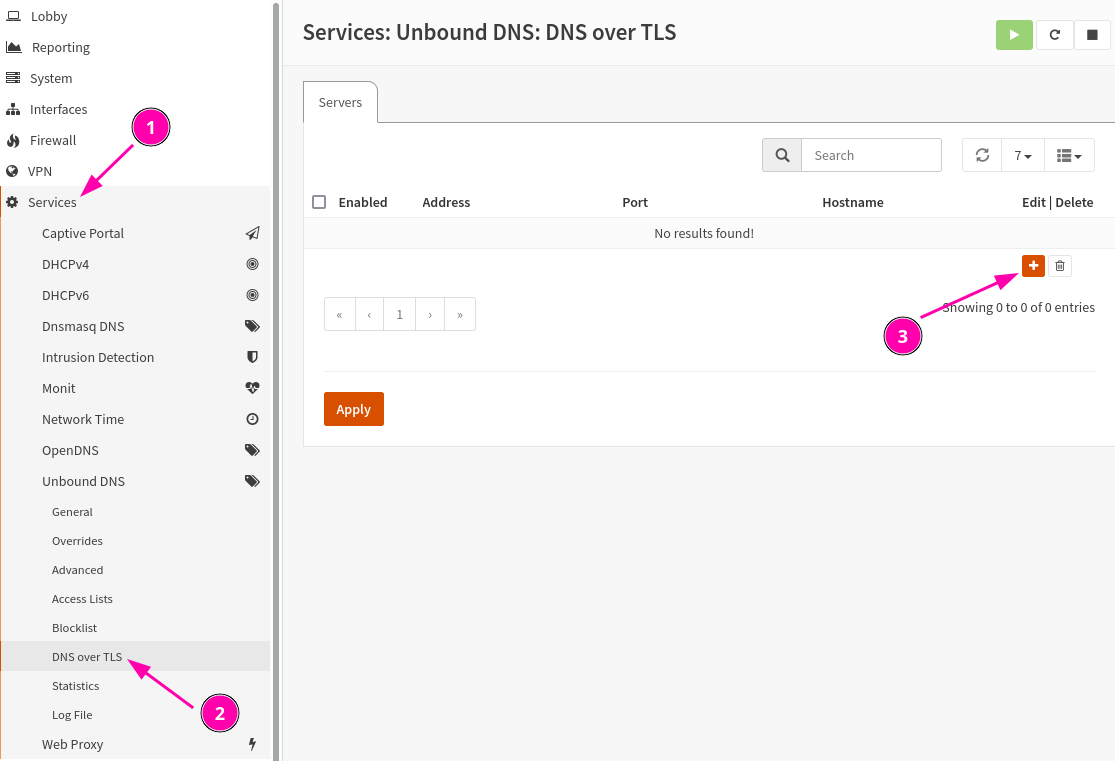
You can resolve the issue by installing an SSL cert if you get a warning saying "Nginx cannot support SSL certificates". To do so, you will need to install the SSL certificate on each server and device. In this article we will discuss how to create an SSL CSR with the DigiCert OpenSSL CSR Wizard.
Configuration warning for nginx SSL certificate
If your site uses an SSL certificate, you might receive an "nginx SSL certificate setup" warning. This message indicates that your server is not set up to use SSL. This means that your certificate does not match the domain name in the browser address bar. In order to fix this, you must configure your server to use HTTPS.
This process begins with installing a SSL Certificate on your NGINX webserver. You can obtain an SSL certificate from a certificate authority. Online, you can find the contact information for a certificate authority. After you have obtained the certificate, restart your server.
Installing an SSL Certificate
An SSL certificate installed on your Nginx webserver will secure your website. It will also make customers feel safer. Installing the certificate requires that you first download the intermediate certificate bundle file from a repository. After you have downloaded the files, configure Nginx so that the certificate is used. The OS platform and Nginx version determine which configuration is required.

Installing an SSL certificate on NGINX is necessary for every web server to support HTTPS, a secure protocol that encrypts the data sent between the web server and the browser. Download the Let's Encrypt certificate first to install on your NGINX server. You must install it on your server. Make sure to enable HTTPS in your NGINX configuration.
CSR creation
There are many ways to create a certificate signing registry (CSR) for the nginx SSL certificate configuration. Creating a CSR is a necessary part of SSL certificate configuration. Creating a CSR will allow you to submit the request for a new certificate to the certificate authority. This certificate will enable Nginx offer HTTPS service for your visitors.
You can store the private key of an SSL certificate in the same file that the certificate. The certificate should be kept separate from your private key. You can also limit the number of protocols and ciphers available through an ssl connection using nginx’s ssl_protocols property.
Use the DigiCert OpenSSL SSR Wizard
A CSR is the first step in setting up SSL certificates for Nginx. OpenSSL is used to create the CSR. After you have created the CSR you can install it on your Nginx web server. You must restart Nginx after the SSL certificate has been installed.
Once you have the CSR generated, you should save it in the same directory where you keep your SSH files. Next, enter the name of your organization, its location, and its state. If necessary, you may also include a two-letter code for the country. You can also use a passphrase or password for further security. The CSR should be saved in the user directory where you keep your SSH keys. You'll also need to backup the ".key” files.

How to create a private key
One of the most crucial steps to setting up SSL on Nginx, is creating a personal key. SSL must function correctly and your server should be protected against all types of vulnerabilities. The default SSL configuration may be sufficient to get the job done. Here are some ways to increase the security of your SSL configuration.
First, generate a personal key for the SSL certificates you want to install. With Let's Encrypt, you can create a new one. A certificate that has a short expiry period is recommended (let's say, 90 days for Let'sEncrypt certificates). You must obtain a new certificate from your CA after your certificate expires. You should renew your certificate regularly to reduce your risk of a private key compromise.
FAQ
Can I build my website using HTML & CSS?
Yes! Yes!
After you have learned how to structure a website, you will need to know HTML and CSS.
HTML stands for HyperText Markup Language. Think of it like writing a recipe for a dish. You would list ingredients, directions, etc. HTML can also be used to inform a computer if certain parts of text should appear bold, underlined and italicized. It's the language of documents.
CSS stands to represent Cascading Stylesheets. Think of it like a style sheet for recipes. Instead of listing each ingredient or instruction, you will write down the general rules for font sizes and spacing.
HTML tells your browser how to create a web page. CSS tells you how.
Don't be afraid to ask questions if you don’t understand any of these terms. Follow these steps to make beautiful websites.
How Do I Create a Free Website?
It all depends on which type of website it is. Do you want to sell products online? Start a blog? Build a portfolio?
You can make an essential website using only HTML and CSS (a combination of HyperText Markup Language and Cascading Style Sheets). While it's possible to create a simple website using HTML and CSS, most web developers recommend using a WYSIWYG editor such as Dreamweaver or Frontpage.
If you don't have experience designing websites, hiring a freelance developer might be the best option. They can help create a custom website for you based on your requirements.
You can either pay a flat rate per project or an hourly rate to a freelance developer. It all depends on how much work they do in a set timeframe.
Some companies charge between $50 and $100 per hour. For larger projects, rates are usually higher.
Many freelance websites also list open jobs. There are many websites that list available jobs.
What technical skills do I need to design and construct my site?
No. You only need to have a basic understanding of HTML/CSS. Online tutorials can be found that cover both HTML and CSS.
How much does it take to build a website.
This question will depend on your goals for your website. Google Sites might be free if your website is limited to information about you or your company.
However, if visitors are serious about coming to your site, they will be willing to pay more.
The best option is to use a Content Management System, such as WordPress. These programs make it easy to create websites without any programming knowledge. This is because the sites are hosted and maintained by third-party companies. You don't have any risk of being hacked.
Squarespace is another way to create a website. They offer a variety of plans ranging from $5 per month to $100 per month, depending on what you want to include on your site.
What is Website Design Software?
Software for designing websites is used by photographers, illustrators and writers.
There are two main types: cloud-based or desktop software. Desktop apps can be installed on your local computer. They also require that you install additional software. Cloud-based solutions can be hosted remotely over the internet. They are ideal for mobile users as they don't require additional software.
Desktop Applications
While desktop applications offer more advanced features than those in cloud-based solutions, they aren't always necessary. Some people prefer to work only from a desktop application because it is more convenient. Some prefer to use the exact same tool whether they're using a smartphone or a laptop.
Cloud-Based Solutions
Web designers who wish to save time or money should consider a cloud-based option. These services let you edit any type or document anywhere you have an internet connection. This means you can work on a tablet while waiting for your coffee to brew.
You will still need to buy a license if you choose to use a cloud-based program. You will not need additional licenses to upgrade to a higher version.
If you have Photoshop, InDesign and Illustrator, these programs can be used for creating web pages.
WordPress: Is it a CMS or not?
Yes. It's a Content Management System. CMS allows you control your website content using a web browser and not an application like Dreamweaver, Frontpage or Frontpage.
The best part about WordPress is that it's free! You don't have to pay for anything other than hosting, which your ISP usually provides.
WordPress was originally created to be a blogging platform. But WordPress now offers many more options, such as eCommerce sites or forums, membership websites and portfolios.
WordPress is very easy to set up and install. Download the file from their website, and then upload it to your server. Simply visit the domain name from your web browser, and then log in to the new site.
After installing WordPress you will need to create a username/password. Once you log in, you will be able to access your settings from a dashboard.
You can now add pages, posts and images to your site. If you are comfortable creating and editing content, you can skip this step.
You can, however, hire a professional Web designer to handle the whole thing if your preference is to work with another person.
How to Create a Static Website
There are two options for creating your first website:
-
Content Management System, also known as WordPress. WordPress): You can download this software and install it on your computer. Then you can use it to create an essential website.
-
A static HTML website is created by you. If you have a good understanding of HTML, this is not difficult.
You might consider hiring an expert to design your website if you are planning to build a large site.
Start by choosing option 2.
Statistics
- In fact, according to Color Matters, a signature color can boost brand recognition by 80%. There's a lot of psychology behind people's perception of color, so it's important to understand how it's used with your industry. (websitebuilderexpert.com)
- It's estimated that in 2022, over 2.14 billion people will purchase goods and services online. (wix.com)
- Is your web design optimized for mobile? Over 50% of internet users browse websites using a mobile device. (wix.com)
- Studies show that 77% of satisfied customers will recommend your business or service to a friend after having a positive experience. (wix.com)
- At this point, it's important to note that just because a web trend is current, it doesn't mean it's necessarily right for you.48% of people cite design as the most important factor of a website, (websitebuilderexpert.com)
External Links
How To
What is Website Hosting?
Website hosting refers to where people go when they visit a website. There are two types.
-
Shared hosting is the cheapest. Your website files reside on a server controlled by someone else. Customers visiting your website send their queries over the Internet, to that server. The server owner then forwards the request to you.
-
Dedicated hosting is the most expensive option. Your website is located on only one server. No other websites share space on the server, so your traffic stays private.
Shared hosting is preferred by most businesses because it's cheaper than dedicated hosting. When you use shared hosting, the company that hosts the server gives you the resources to run your site.
But there are pros and cons to both options. These are some of the major differences between them.
Pros of Shared Hosting
-
Lower Cost
-
Easy to Set Up
-
Frequent Updates
-
It can be found on many web hosting companies
Shared hosting is often as cheap as $10 per month. Keep in mind, however, that bandwidth is usually included in the price. Bandwidth is the data transfer speed that you have over the Internet. So even if you only upload photos to your blog, you may still pay extra money for high amounts of data transferred through your account.
Once you begin, you will soon see why you spent so much on your previous host. Most shared hosts have very poor customer support. Although they will help you set up your site occasionally, you are on your own once you have done that.
A provider with 24-hour telephone support is a good choice. They will help you deal with any issues that arise while your sleeping.
Dedicated Hosting Cons:
-
More Expensive
-
Less is More
-
Requires specific skills
You're getting everything you need with dedicated hosting to operate your website. You won't have to worry about whether you're using enough bandwidth or whether you've got enough RAM (random access memory).
This means that you will have to pay a little more upfront. Once you get started with your online business, you will find that you don't require much technical support. You'll soon be an expert at managing servers.
Which Is Better for My Business?
The answer will depend on the type and purpose of your website. If you're selling products only, shared hosting might work best. It is simple to set up and easy to maintain. You'll probably receive frequent updates because you are sharing a server hosting many other sites.
If you are looking to create a community around your brand, dedicated hosting is the best option. You can focus on building your brand without worrying about handling your traffic.
Bluehost.com has both. They offer unlimited monthly data transfers and 24/7 support. You can also register domain names for free.